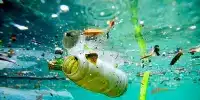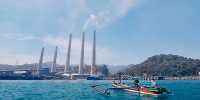A new study published in the Journal of Scientific Reports suggests that coastal cities could have a profound effect on the biological processes of animals that occupy the surrounding seabed. Their results showed that three-quarters of these coastal settlements from large cities were exposed to potentially harmful light pollution levels.
This is the first study of its kind to look at the effects of artificial light on marine species and what effect the presence of this light can have on the affected animals. The study, led by researchers at the University of Plymouth in the UK, focused on the Plymouth Sound and the Copper estuary, looking at the presence of light through water columns and its penetration.
They used mapping and radioactive transfer modeling tools over four nights in 2018 to detect how much blue, green and red artificial light was present when the surface, bottom, and shore were illuminated toward the sea. Their results showed that about three-quarters of the green and blue wavelengths were exposed to light pollution, each reaching 76 percent and percent0 percent, respectively. Red light, on the other hand, has exposed less than 1 percent of the ocean floor.
Most white LEDs used in cities to illuminate roads are used as a mixture of green, blue and red light, more infiltrating green and blue light will be abundant in coastal cities meaning searches to rely on themselves and their biological activities to rely on natural cures.
Dr. Thomas Davies, Lecturer in Marine Conservation at the University of Plymouth and the paper’s lead author in a statement, “The areas exposed here are not trivial.” “Our results focus on a busy maritime area and show light from coastal urban centers spanning the surface of the ocean, along the coast and coastal seabed. But Plymouth is still a coastal town with a population of 240,000.”
Seventy-five percent of the world’s megacities are now located in coastal areas, and the coastal population is expected to more than double by 2000. Thus, if we do not act now, it is clear that biologically important light pollution on the coast will take on a global scale, increase in intensity and range, and endanger marine habitat. “
Concerned about how the global expansion of coastal cities could have a profound effect on the survival of coastal species, researchers are now calling for a more comprehensive review of the full effects of coastal light pollution to see if anything can be done to mitigate the worst effects.
















